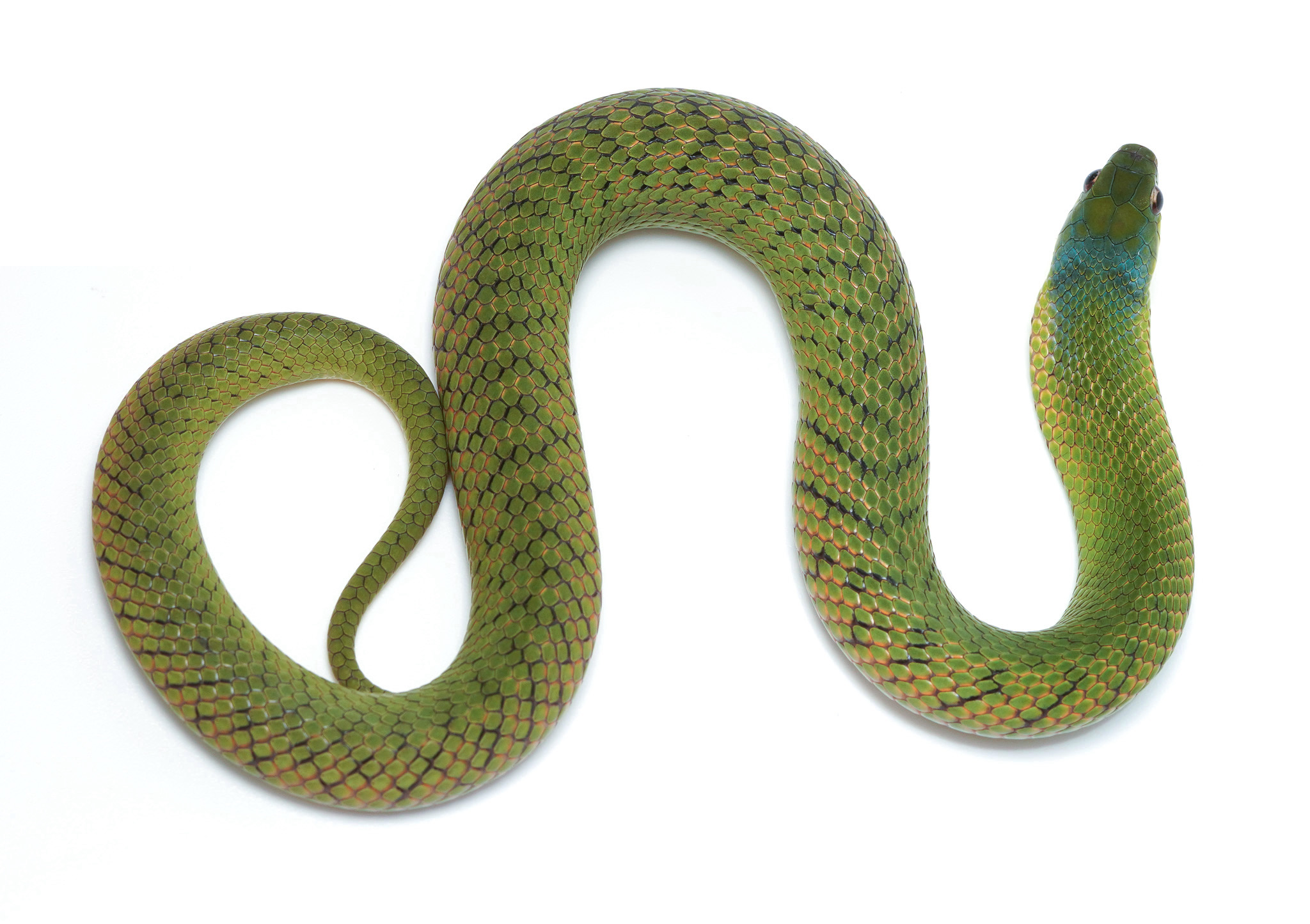|
Erythrolamprus Perfuscus
The Barbados racer (''Erythrolamprus perfuscus''), also commonly known as the tan ground snake, was a species of Colubridae, colubrid snake that was Endemism, endemic to Barbados. It is now Extinction, extinct. History This species was often believed to be the snake described by Richard Ligon in his "''A True and Exact History of the Island of Barbadoes''" (1657): "Having done with Beasts and Birds, we will enquire what other lesser Animalls or Insects there are upon the Iland, of which, Snakes are the chiefe, because the largest; and I have seen some of those a yard and a halfe long." Conservation status It is believed to be extinct, as there has not been a confirmed sighting since 1961. Habitat loss is believed to have caused its decline, particularly the land clearance and pesticide use associated with tree crops. Description It grew to a total length of , which included a tail long.George Albert Boulenger, Boulenger, G.A. 1894. ''Catalogue of the Snakes in the British Museum ... [...More Info...] [...Related Items...] OR: [Wikipedia] [Google] [Baidu] |
Edward Drinker Cope
Edward Drinker Cope (July 28, 1840 – April 12, 1897) was an American zoologist, paleontology, paleontologist, comparative anatomy, comparative anatomist, herpetology, herpetologist, and ichthyology, ichthyologist. Born to a wealthy Quaker family, he distinguished himself as a child prodigy interested in science, publishing his first scientific paper at the age of 19. Though his father tried to raise Cope as a gentleman farmer, he eventually acquiesced to his son's scientific aspirations. Cope had little formal scientific training, and he eschewed a teaching position for field work. He made regular trips to the Western United States, American West, prospecting in the 1870s and 1880s, often as a member of United States Geological Survey, U.S. Geological Survey teams. A personal feud between Cope and paleontologist Othniel Charles Marsh led to a period of intense fossil-finding competition now known as the Bone Wars. Cope's financial fortunes soured after failed mining ventures i ... [...More Info...] [...Related Items...] OR: [Wikipedia] [Google] [Baidu] |
Albert Schwartz (zoologist)
Albert Schwartz (September 13, 1923 – October 18, 1992) was an American zoologist who worked extensively with the herpetofauna of Florida and the West Indies, and later with butterflies. One magazine article once dubbed him as one of the "Kings of West Indian Anole Taxonomy". Career Schwartz obtained his PhD from the University of Michigan in mammalogy in 1952. Already at that time, he had a keen interest in amphibians and reptiles, as well as in warmer climates. Schwartz spent most of his professional working life at Miami-Dade Community College; he was also supported by a family trust, which he used to fund his own activities as well as field expeditions by others. He was a Research Associate of the Carnegie Museum of Natural History, and also an associate of the Florida Museum of Natural History, the National Museum of Natural History (Smithsonian Institution), and the ''Museo Nacional de Historia Natural'', Santo Domingo, Dominican Republic. Starting in 1954, he wor ... [...More Info...] [...Related Items...] OR: [Wikipedia] [Google] [Baidu] |
Reptiles Described In 1862
Reptiles, as commonly defined, are a group of tetrapods with an ectothermic metabolism and Amniotic egg, amniotic development. Living traditional reptiles comprise four Order (biology), orders: Testudines, Crocodilia, Squamata, and Rhynchocephalia. About 12,000 living species of reptiles are listed in the Reptile Database. The study of the traditional reptile orders, customarily in combination with the study of modern amphibians, is called herpetology. Reptiles have been subject to several conflicting Taxonomy, taxonomic definitions. In Linnaean taxonomy, reptiles are gathered together under the Class (biology), class Reptilia ( ), which corresponds to common usage. Modern Cladistics, cladistic taxonomy regards that group as Paraphyly, paraphyletic, since Genetics, genetic and Paleontology, paleontological evidence has determined that birds (class Aves), as members of Dinosauria, are more closely related to living crocodilians than to other reptiles, and are thus nested among re ... [...More Info...] [...Related Items...] OR: [Wikipedia] [Google] [Baidu] |
Endemic Fauna Of Barbados
Endemism is the state of a species being found only in a single defined geographic location, such as an island, state, nation, country or other defined zone; organisms that are indigenous to a place are not endemic to it if they are also found elsewhere. For example, the Cape sugarbird is found exclusively in southwestern South Africa and is therefore said to be ''endemic'' to that particular part of the world. An endemic species can also be referred to as an ''endemism'' or, in scientific literature, as an ''endemite''. Similarly, many species found in the Western ghats of India are examples of endemism. Endemism is an important concept in conservation biology for measuring biodiversity in a particular place and evaluating the risk of extinction for species. Endemism is also of interest in evolutionary biology, because it provides clues about how changes in the environment cause species to undergo range shifts (potentially expanding their range into a larger area or becomin ... [...More Info...] [...Related Items...] OR: [Wikipedia] [Google] [Baidu] |
Reptiles Of Barbados
Reptiles, as commonly defined, are a group of tetrapods with an ectothermic metabolism and Amniotic egg, amniotic development. Living traditional reptiles comprise four Order (biology), orders: Testudines, Crocodilia, Squamata, and Rhynchocephalia. About 12,000 living species of reptiles are listed in the Reptile Database. The study of the traditional reptile orders, customarily in combination with the study of modern amphibians, is called herpetology. Reptiles have been subject to several conflicting Taxonomy, taxonomic definitions. In Linnaean taxonomy, reptiles are gathered together under the Class (biology), class Reptilia ( ), which corresponds to common usage. Modern Cladistics, cladistic taxonomy regards that group as Paraphyly, paraphyletic, since Genetics, genetic and Paleontology, paleontological evidence has determined that birds (class Aves), as members of Dinosauria, are more closely related to living crocodilians than to other reptiles, and are thus nested among re ... [...More Info...] [...Related Items...] OR: [Wikipedia] [Google] [Baidu] |
Snakes Of The Caribbean
Snakes are elongated limbless reptiles of the suborder Serpentes (). Cladistically squamates, snakes are ectothermic, amniote vertebrates covered in overlapping scales much like other members of the group. Many species of snakes have skulls with several more joints than their lizard ancestors and relatives, enabling them to swallow prey much larger than their heads (cranial kinesis). To accommodate their narrow bodies, snakes' paired organs (such as kidneys) appear one in front of the other instead of side by side, and most only have one functional lung. Some species retain a pelvic girdle with a pair of vestigial claws on either side of the cloaca. Lizards have independently evolved elongate bodies without limbs or with greatly reduced limbs at least twenty-five times via convergent evolution, leading to many lineages of legless lizards. These resemble snakes, but several common groups of legless lizards have eyelids and external ears, which snakes lack, although this rule ... [...More Info...] [...Related Items...] OR: [Wikipedia] [Google] [Baidu] |
Erythrolamprus
''Erythrolamprus'' is a genus of colubrid snakes native to Central America, the Caribbean, and South America. They include the false coral snakes, which appear to be coral snake mimics. Classification The genus ''Erythrolamprus'' belongs to the subfamily Dipsadinae (which is sometimes referred to as the family Dipsadidae), belonging to the family Colubridae. ''Erythrolamprus'' previously contained just six species, mostly coral snake mimics. However, molecular studies beginning in 2009 determined that ''Erythrolamprus'' was not monophyletic, and thus most of the snakes of the genera '' Liophis'', '' Leimadophis'', and '' Umbrivaga'' were placed into ''Erythrolamprus'', bringing the number of species up to 50. Description ''Erythrolamprus'' snakes are usually less than in length. They are ground snakes, with lifestyles ranging from fossorial (burrowing) to terrestrial to semi-aquatic, and in habitats ranging from rainforests to savannas to the mountainous páramo, up to ... [...More Info...] [...Related Items...] OR: [Wikipedia] [Google] [Baidu] |
Encyclopedia Of Life
The Encyclopedia of Life (EOL) is a free, online encyclopedia intended to document all of the 1.9 million living species known to science. It aggregates content to form "pages" for every known species. Content is compiled from existing trusted databases which are curated by experts and it calls on the assistance of non-experts throughout the world. It includes video, sound, images, graphics, information on characteristics, as well as text. In addition, the Encyclopedia incorporates species-related content from the Biodiversity Heritage Library, which digitizes millions of pages of printed literature from the world's major natural history libraries. The BHL digital content is indexed with the names of organisms using taxonomic indexing software developed by the Global Names project. The EOL project was initially backed by a US$50 million funding commitment, led by the MacArthur Foundation and the Sloan Foundation, who provided US$20 million and US$5 million, respectively. The add ... [...More Info...] [...Related Items...] OR: [Wikipedia] [Google] [Baidu] |
Carnegie Museum Of Natural History
The Carnegie Museum of Natural History (abbreviated as CMNH) is a natural history museum in the Oakland (Pittsburgh), Oakland neighborhood of Pittsburgh, Pennsylvania. It was founded by List of people from the Pittsburgh metropolitan area, Pittsburgh-based industrialist Andrew Carnegie in 1896. Housing some 22 million specimens, the museum features one of the most extensive paleontological and entomological collections in the world. Description and history The museum consists of organized into 20 galleries as well as research, library, and office space. It holds some 22 million specimens, of which about 10,000 are on view at any given time and about 1 million are cataloged in online databases. In 2008 it hosted 386,300 admissions and 63,000 school group visits. Museum education staff also actively engage in outreach by traveling to schools all around western Pennsylvania. The museum gained prominence in 1899 when its scientists unearthed the fossils of ''Diplodocus carnegi ... [...More Info...] [...Related Items...] OR: [Wikipedia] [Google] [Baidu] |
Macmillan Publishers
Macmillan Publishers (occasionally known as the Macmillan Group; formally Macmillan Publishers Ltd in the United Kingdom and Macmillan Publishing Group, LLC in the United States) is a British publishing company traditionally considered to be one of the Big Five (publishers), "Big Five" English language publishers (along with Penguin Random House, Hachette Book Group USA, Hachette, HarperCollins and Simon & Schuster). Founded in London in 1843 by Scottish brothers Daniel MacMillan, Daniel and Alexander MacMillan (publisher), Alexander MacMillan, the firm soon established itself as a leading publisher in Britain. It published two of the best-known works of Victorian-era children's literature, Lewis Carroll's ''Alice's Adventures in Wonderland'' (1865) and Rudyard Kipling's ''The Jungle Book'' (1894). Former Prime Minister of the United Kingdom, Harold Macmillan, grandson of co-founder Daniel, was chairman of the company from 1964 until his death in December 1986. Since 1999, Macmi ... [...More Info...] [...Related Items...] OR: [Wikipedia] [Google] [Baidu] |
Species
A species () is often defined as the largest group of organisms in which any two individuals of the appropriate sexes or mating types can produce fertile offspring, typically by sexual reproduction. It is the basic unit of Taxonomy (biology), classification and a taxonomic rank of an organism, as well as a unit of biodiversity. Other ways of defining species include their karyotype, DNA sequence, morphology (biology), morphology, behaviour, or ecological niche. In addition, palaeontologists use the concept of the chronospecies since fossil reproduction cannot be examined. The most recent rigorous estimate for the total number of species of eukaryotes is between 8 and 8.7 million. About 14% of these had been described by 2011. All species (except viruses) are given a binomial nomenclature, two-part name, a "binomen". The first part of a binomen is the name of a genus to which the species belongs. The second part is called the specific name (zoology), specific name or the specific ... [...More Info...] [...Related Items...] OR: [Wikipedia] [Google] [Baidu] |







